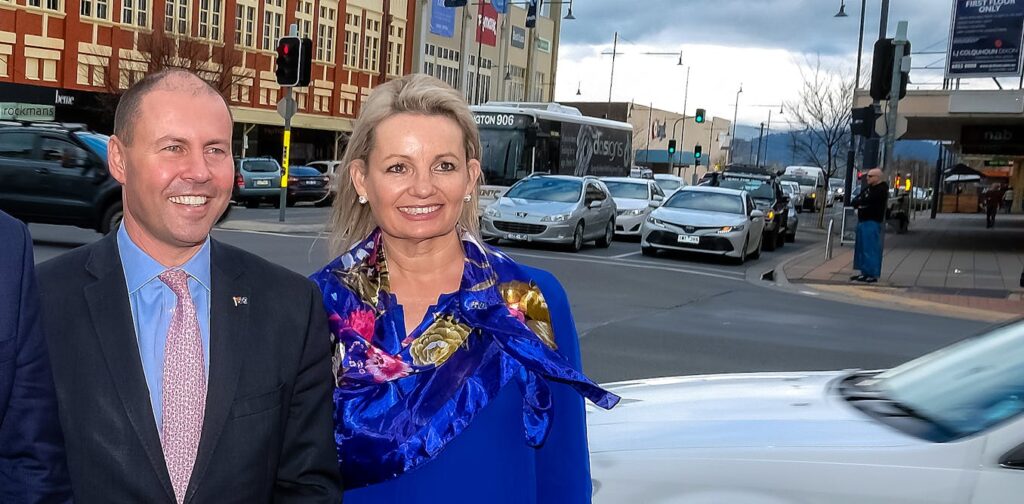
The political landscape within Australia’s Liberal Party is currently marked by turmoil and uncertainty, with the leadership of Sussan Ley under intense scrutiny. This internal strife was highlighted when Victorian Senator Sarah Henderson, a right-wing opponent of the net-zero policy, openly criticized Ley, stating, “I do have to say, really honestly, I do think Sussan is losing support. But I do believe in miracles, we can turn things around.” Despite her words, Henderson’s call for change seems more strategic than hopeful, as she stopped short of demanding an immediate leadership spill.
Observers widely anticipate Ley’s eventual ousting, though the timing remains uncertain. Her removal this year would likely be perceived as premature, and the necessary political alignments are not yet in place. The party’s internal dynamics saw predictable responses, with some colleagues rallying behind Ley, while others, like Angus Taylor, her chief rival, refrained from challenging her openly. Jane Hume, another party member who has previously expressed dissatisfaction with Ley, surprisingly offered her support, emphasizing Ley’s consistent approach to emissions reductions.
The Liberal Party’s Net-Zero Dilemma
This leadership crisis coincides with a critical juncture in the Liberal Party’s policy on net-zero emissions. The coming week is set to be pivotal, with a series of meetings planned to address the party’s stance. On Wednesday, a general discussion will take place in the Liberal party room, followed by a meeting of Liberal shadow ministers on Thursday. During these sessions, Dan Tehan, the opposition energy spokesman, will present a proposal for the party’s energy and emissions reduction policy.
Attendance at these meetings is mandatory, with exceptions only for illness or overseas parliamentary duties, causing some grumbling among party members about the inconvenience. Following these discussions, a committee comprising senior Liberals and Nationals will attempt to forge a “joint Coalition position,” which will then be presented for endorsement at a virtual meeting of the joint parties on Sunday.
The challenge lies in achieving a unified policy. The Nationals have already abandoned the net-zero commitment, and the Liberals’ current pledge to achieve net-zero by 2050 is effectively defunct. The party faces a choice between omitting net-zero entirely from their platform or framing it as a distant aspiration. The situation remains fluid, with further negotiations expected in the days ahead.
Leadership Crisis and Potential Solutions
Beyond the immediate issues of net-zero and Ley’s leadership, the Liberal Party faces a deeper crisis regarding its long-term direction and leadership. While replacing Ley with figures like Taylor or Andrew Hastie is possible, few believe these changes would significantly enhance the party’s prospects of returning to power. The absence of standout leaders within the parliamentary ranks compounds this problem.
Amidst this backdrop, speculation is mounting about a potential return to politics by former Treasurer Josh Frydenberg. Defeated in Kooyong in 2022 by Monique Ryan, Frydenberg has since transitioned to a senior role in the banking sector. However, his political ambitions remain, and he has maintained influence over the Liberal Party’s operations in Kooyong. His upcoming autobiography, co-authored with Gideon Haigh, is expected to fuel further speculation about his political future.
Frydenberg’s Potential Impact
Frydenberg’s return could offer the Liberal Party a broader range of leadership options and potentially attract high-profile candidates and increased business support. Ideologically centrist, Frydenberg is seen as capable of effectively engaging in economic debates. However, his leadership might be perceived as a return to the past, although he could compare favorably against the current Liberal leadership.
For Frydenberg, a political comeback involves significant risks. According to Kos Samaras of RedBridge political consultancy, Frydenberg faces three major challenges: winning back the Kooyong seat, gaining the support of a party increasingly dominated by regional conservatives, and persuading the party to adopt a moderate conservative platform that resonates in urban areas.
“The next election may be Frydenberg’s last chance to re-enter politics,” Samaras notes, emphasizing the strategic calculations involved in his decision-making process.
Looking Ahead
As the Liberal Party navigates these turbulent times, the potential return of Josh Frydenberg looms as a significant factor in its future trajectory. His decision will likely hinge on extensive polling in Kooyong and the broader political climate. Meanwhile, the party must address its internal divisions and policy challenges to regain electoral competitiveness.
The coming weeks will be crucial in determining both the immediate outcomes of the net-zero policy debate and the longer-term leadership dynamics within the Liberal Party. As the political landscape evolves, the party’s strategies and decisions will shape its prospects in the next election cycle.






